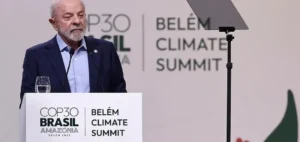The Russian oil price cap is being debated. In fact, the G7 is advocating a cap on Russian oil to limit Moscow’s ability to finance its war. Invoked in order to put pressure on a Russian state using the current energy crisis, its implementation raises questions.
While the decline in Europe’s dependence on Russian oil has made it possible to consider this measure, many pitfalls remain. The possibility of reprisals from Moscow weighs heavily in the balance, especially for the most exposed countries. In this context, China and India hold, in part, the keys to the success of this risky G7 gamble.
It is difficult to know whether the desire to exert financial pressure on Russia will bear fruit or whether it will, on the contrary, lead to a potential acceleration of the global recession. The surge in energy prices has largely benefited Russia, whose fossil fuel exports have brought in $158 billion since the war began, according to the Centre for Research on Energy and Clean Air (CREA).
The series of sanctions adopted by the EU clearly shows its limits, in the short term. The EU now wants to limit its dependence on fossil fuels and adopt more restrictive measures towards Russia.
A Europe less dependent on Russian hydrocarbons
The invasion of Ukraine has acted as an indicator of the EU’s energy fragility. According to Eurostat, Europe imported 58% of its fossil energy resources in 2020. In the first half of 2021, Russia supplied 48.4% of the gas and 25.4% of the oil imported by the Europeans.
The EU, faced with an unprecedented energy crisis following the invasion of Ukraine, has therefore set about reducing its energy dependence. This is demonstrated by the REpowerEU program devoted to the Union’s energy independence, adopted a few weeks after the beginning of the conflict.
Russian crude oil imports reached 1.7 million barrels per day compared to 2.6 million per barrel in January. The decline is significant, even though theEU remains the largest market for Russian crude according to the IEA. Imports from the United States replaced 800,000 barrels of Russian imports, while Norway supplied about one-third of the demand.
Nevertheless, the implementation of the Russian oil price cap is proving to be particularly complex.
Cap level and marine insurance
The success of the Russian oil price cap mechanism depends mainly on meeting a certain threshold. The Russian oil barrel is already selling at deep discounts of 30 to 40 dollars.
If it is too low, the cap could lead to retaliation by the Russians, who would halt some production, resulting in an overall increase in the price of crude. If it is too high, Russia will continue to benefit from redirecting its oil out of Europe at the current price.
Ehsan Khoman, MUFG’s head of emerging markets, confirms the importance of the Russian oil price cap:
“If the cap is close to the cost of production, it is comparable to an embargo and Russia will not sell its oil for free but will set it at the market price.”
The cap on the price of Russian oil is also based on the ban on insurers covering the transportation of black gold. A waiver would be granted to purchasers, provided that the prices charged are at or below the cap. Europeans represent 90 to 95% of the players in this marine insurance market and hope to ensure that this measure is respected as much as possible.
The decline in the value of Russian oil exports
Lowering the value of Russian exports is thus the priority of the US-led coalition. The G7 seems to be betting that Russia will favor redirecting its oil to Asia rather than stopping production. In fact, energy exports account for more than half of the Russian government’s budget.
It is unlikely that China and India will go along with the Russian oil price cap. If the attempt to deprive Putin of his oil revenues is successful, a large contingent of Asian consumers would be likely to buy larger quantities of cheap Russian crude.
In this case, Asian refiners would have additional leverage to negotiate prices downwards. The United States hopes that this cap will increase the reduction of Russian crude prices on the market.
The pitfall of circumvention measures
The success of the Russian oil price cap relies on the G7’s ability to rally beyond its coalition. This strategy has already shown its limits in the context of sanctions. In addition, Putin has already announced that he will stop oil exports to countries imposing a cap.
The conditions for redirecting oil exports to Russia’s allied countries are thus of paramount importance. Possible circumvention of maritime insurance by China and India would also complicate the effectiveness of the measure. China would indeed be likely to accept Russian insurance, as would India.
However, trade constraints in Asian markets may favor the G7 plan. Oil demand in the Chinese market has slowed due to repeated lock-ups. Platts Analytics expects China’s oil demand to fall to 95,000 barrels per day, a 0.6% decline.
In addition, Russian crude oil exports to India and China have more than doubled since the conflict began. As a result, the ability of refiners to process higher volumes of Russian oil is now limited.
The cap on the price of Russian oil, while it may reduce Moscow’s oil revenues, remains a measure with uncertain results. The impact of the measure depends largely on the line taken by Russia’s allies and the extent to which the Kremlin’s resident will go.






















